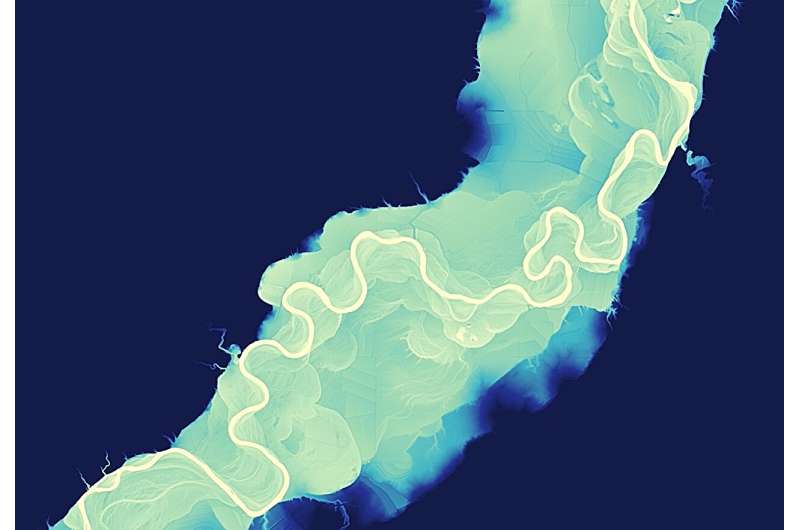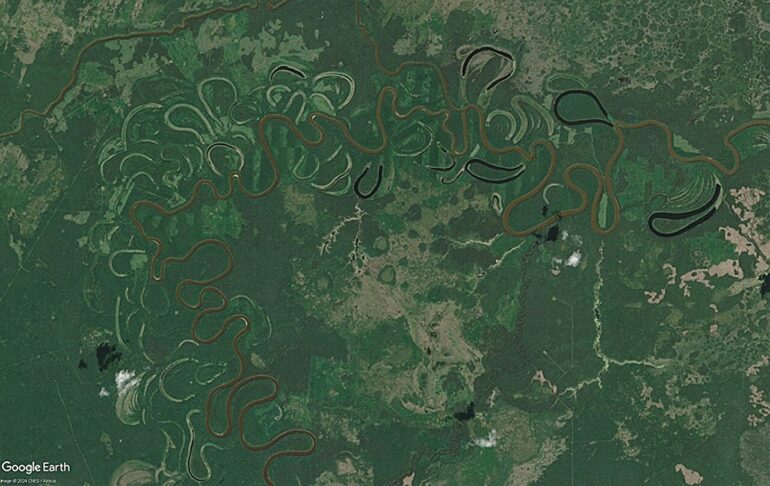How are rivers characterized? Traditional methods rely on plant forms and sedimentological techniques, focusing on deposits. Riccardo Maitan, a Ph.D. candidate at the University of Padova, is developing a novel approach based on river hydrological behavior, emphasizing morphodynamics. His work aims to identify the signature of peak discharge variability—a key hydrological metric—in meandering rivers. This research spans over 15 years of USGS data and Google Earth image time series.
In a study recently published in Geology, Maitan analyzes a global set of 22 rivers, totaling 5,500 km in length, over time. This research is part of a larger project focused on geosciences for sustainable development.
Bend cutoff plays a fundamental role in shaping rivers on an alluvial plain. It buffers river sinuosity, modulates lateral migration, and affects the surrounding stratigraphy. Most rivers exhibit one of two distinct types of cutoffs: neck cutoffs and chute cutoffs. Neck cutoffs occur when the narrow land bridge separating two adjacent bends is breached, a natural progression in meander evolution.
An example of a river with a neck cutoff regime is the Purus River, an affluent of the Amazon River. Chute cutoffs, on the other hand, occur when the river cuts a new bypass channel through its point bar, prematurely ending the meander life cycle. The Powder River in Montana, an affluent of the Yellowstone River, exemplifies a chute cutoff regime.

Relative Elevation Model of the floodplain of the Powder River, Montana. Example of high Overbank Hydrologic Variability (OHV) with prevalent chute cutoff. © Riccardo Maitan
But what determines the cutoff regime of a river? Maitan and team investigate factors including climate and vegetation cover, concluding that the main controlling factor is the variability of overbank discharges—the nature and frequency of flood events. Neck cutoffs typically develop in rivers with limited overbank discharge variability, while chute cutoffs are more common in rivers experiencing intense, short-lived flooding.
A river’s cutoff regime leaves lasting footprints on the geomorphology of its floodplain, making oxbow trace analysis across floodplains a potential tool for reconstructing paleohydrologic regimes of meandering rivers based on morphometric evidence.
The newfound correlation between a river’s hydrological variability and its cutoff regime also underscores the need for heightened scrutiny of potential anthropogenic impacts on river systems. Damming, for example, is often used to reduce hydrological fluctuation for flood control.

Relative Elevation Model of the floodplain of the Purus River, South America. Example of low OHV with prevalent neck cutoff. © Riccardo Maitan
However, Maitan’s research suggests that this practice might shift a river from a chute cutoff regime to a neck cutoff regime, leading to more frequent bend cutoffs and a less sinuous river. This shift also affects sediment residence time, impacting carbon flux within the alluvial plain and potentially influencing climate.
Maitan’s innovative research provides new insights into river dynamics and their broader environmental implications, offering a fresh perspective on managing and preserving riverine ecosystems.
More information:
Riccardo Maitan et al, Hydrologically driven modulation of cutoff regime in meandering rivers, Geology (2024). DOI: 10.1130/G51783.1
Provided by
Geological Society of America
Citation:
New research sheds light on river dynamics and cutoff regimes (2024, July 17)



